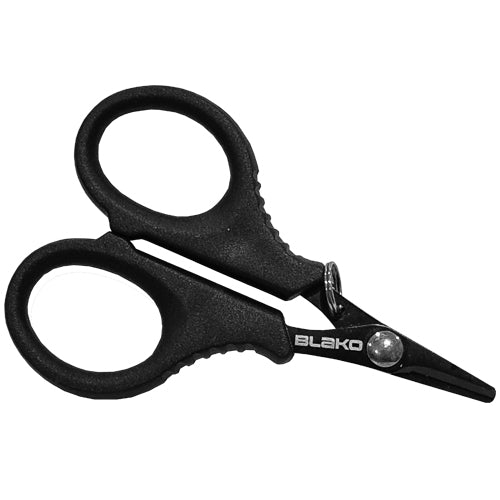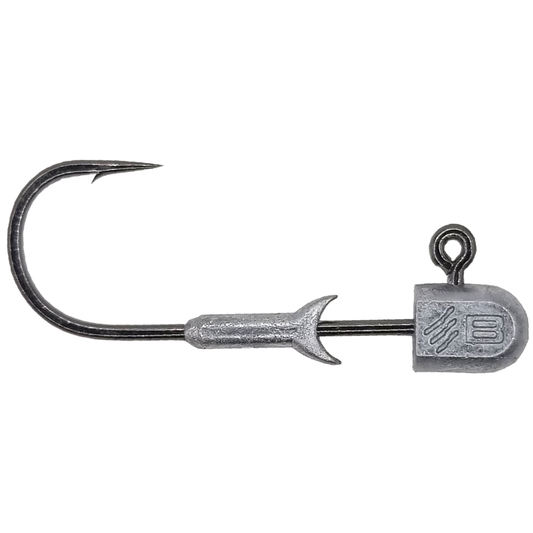
Fishing Hard Bodies For Bream
Share
Fishing with Hard Body Lures for Bream
Fishing for black bream with hard body lures has become a favorite technique among anglers in Australia. Bream are known for their cunning and cautious nature, making them a challenging and rewarding species to target with lures. Hard body lures are particularly effective for bream fishing, as they can mimic the small baitfish, prawns, and crustaceans that bream commonly prey upon. With the right approach and techniques, hard body lures can produce impressive results in a variety of environments, from estuaries and rivers to urban waterways.
This guide will cover all the essentials you need to know about using hard body lures for bream fishing. From selecting the best lure types and tackle setups to effective fishing techniques and seasonal tips, we’ll explore each aspect in detail.
Why Hard Body Lures Are Effective for Bream
Hard body lures are designed to replicate small prey, with detailed finishes and lifelike movement that bream find hard to resist. Here’s why hard body lures are especially effective for targeting bream:
Realistic Appearance: Hard body lures often have realistic colors and patterns that mimic the natural prey of bream, including small fish and crustaceans. These lifelike appearances make the lures appealing in clear waters, where bream rely heavily on their sight to detect prey.
Versatile Retrieval Options: Hard body lures allow for a range of retrieval techniques, from slow and steady to fast and erratic. This versatility allows anglers to adapt their presentation based on bream behavior and environmental factors.
Depth Control: Many hard body lures come with diving lips that control the depth of the lure. Anglers can target bream in shallow areas, mid-depth, or near the bottom, depending on where the fish are holding.
Sound and Vibration: Some hard body lures produce sound or create subtle vibrations in the water, which can attract bream even in murky or low-visibility conditions. The sound mimics the movement of small prey, making it easier for bream to locate the lure.
Types of Hard Body Lures for Bream
There are several types of hard body lures that are especially effective for targeting bream. Each type has its own unique action and is suited to specific fishing scenarios.
Crankbaits
Description: Crankbaits have a compact, rounded body and a diving lip that allows them to dive to various depths depending on the retrieve speed. They often have a tight wobbling action that mimics small prey.
Ideal Scenarios: Crankbaits work well around rock walls, weed beds, and bridge pylons. They are particularly effective when bream are feeding near the bottom or around structure.
Minnow-Style Lures
Description: Minnow-style lures have a slim profile and are typically longer than crankbaits. They often come in suspending or sinking models, which allows them to stay in the strike zone longer.
Ideal Scenarios: These lures are versatile and effective in both shallow and deeper waters. They are particularly useful in clear water where bream are actively hunting.
Shallow-Diving Lures
Description: Shallow-diving lures have a small diving lip, allowing them to stay just beneath the water’s surface. These lures are ideal for targeting bream in shallow water or along rocky edges.
Ideal Scenarios: Use shallow-diving lures when fishing over weed beds, sand flats, or rocky areas where bream are searching for food in shallow water.
Suspending Lures
Description: Suspending lures are designed to stay at a specific depth in the water column when paused, which makes them ideal for enticing bream to strike during pauses.
Ideal Scenarios: These lures are effective around bridge pylons, submerged timber, and other structure where bream often hold. The ability to “suspend” keeps them in the strike zone longer, increasing the chance of a bite.
Vibration Lures
Description: Vibration lures, or “vibes,” are compact lures that produce strong vibrations when retrieved. These lures are particularly useful in low-visibility conditions.
Ideal Scenarios: Vibration lures are best suited for fishing in deeper or murky water. Their strong vibrations help draw bream in from a distance, even in challenging conditions.
Tackle Recommendations for Fishing with Hard Body Lures
Using hard body lures for bream requires specific tackle to maximize the effectiveness of the presentation and handle the fight. Here’s a breakdown of the recommended rod, reel, line, and leader setup:
Rod
Length and Action: A light spinning rod in the 6-7 foot range with a fast action is ideal for fishing with hard body lures. This setup allows for accurate casting, quick hook sets, and enough sensitivity to feel subtle bites.
Power Rating: A rod rated 1-3 kg or 2-4 kg provides the right balance of sensitivity and strength for bream fishing, allowing you to work the lure effectively while having enough power to bring the fish in.
Reel
Size and Smoothness: A 2000-2500 size spinning reel is well-suited for this style of fishing. Look for a reel with a smooth drag system, as bream can put up a decent fight, especially around structure.
Features to Look For: A lightweight reel with quality drag control is essential for keeping pressure on bream while minimizing the risk of break-offs.
Line
Type and Weight: Braided line in the 6-8 lb range is ideal for hard body lure fishing. Braid offers high sensitivity and minimal stretch, making it easier to detect bites and control the lure.
Advantages of Braid: The thin diameter of braid allows for longer casts and better handling in windy conditions, which is useful when casting towards structure from shore.
Leader
Material and Weight: Use a fluorocarbon leader in the 4-8 lb range. Fluorocarbon is nearly invisible underwater, which helps avoid spooking bream in clear water.
Length: A 1-2 meter leader is typically sufficient for most fishing scenarios, although longer leaders are beneficial in clear, shallow environments.
Techniques for Fishing with Hard Body Lures for Bream
Using hard body lures effectively requires specific techniques that imitate natural prey behavior and entice bream to bite. Here are some proven techniques to try:
Slow Roll Technique
How It Works: The slow roll technique involves a steady, slow retrieve, allowing the lure to maintain a consistent wobble or swimming action.
When to Use It: This technique is particularly effective when bream are actively feeding near structure, such as rock walls or bridge pylons.
Pause-and-Twitch Technique
How It Works: Cast the lure near structure, then retrieve it slowly with intermittent pauses and quick twitches. The pause allows the lure to sit in the strike zone, while the twitch mimics the movement of a distressed baitfish.
When to Use It: This technique works well around submerged timber and rocky areas where bream are waiting to ambush prey. The sudden movements attract attention and encourage strikes.
Stop-and-Go Technique
How It Works: This technique involves a series of short retrieves followed by pauses, making the lure appear to be a small fish or prawn moving and resting. Bream often strike during the pause.
When to Use It: This technique is effective in both shallow and deeper water, particularly when bream are being cautious or inactive.
Crank-and-Glide Technique
How It Works: This technique involves a medium-speed retrieve to get the lure diving, followed by a slower “glide” that allows the lure to swim naturally at its diving depth. It works well with crankbaits and minnow-style lures.
When to Use It: Use this technique over flats, around weed beds, or near the edges of deeper channels.
Suspending Action
How It Works: For suspending lures, allow the lure to sit at a specific depth in the water column with occasional twitches. This creates the appearance of a baitfish hovering or moving cautiously.
When to Use It: This technique is highly effective around bridge pylons and rock walls, where bream may strike a lure that stays in the strike zone.
Seasonal Tips for Fishing with Hard Body Lures
Bream behavior and feeding patterns change with the seasons, and adjusting your approach can improve your success.
Summer
Behavior: In summer, bream are more active and tend to stay in the shallows during early mornings and late afternoons to avoid the midday heat.
Technique: Try using shallow-diving lures or suspending lures in shaded areas around structures like jetties and bridge pylons. Focus on casting along shadow lines where bream are likely to be ambushing prey.
Autumn
Behavior: During autumn, bream feed more actively in preparation for winter. This season is ideal for targeting bream with crankbaits and mid-diving lures around rock walls and oyster racks.
Technique: Use the slow roll or pause-and-twitch technique, as bream are often willing to chase a moving lure. Focus on areas with natural structure that holds small baitfish.
Winter
Behavior: In colder months, bream move to deeper areas where temperatures are more stable, making suspending and vibration lures effective in deeper channels.
Technique: Use the stop-and-go technique to keep the lure in the deeper strike zone. Fishing slowly and patiently is key, as bream can be more sluggish in winter.
Spring
Behavior: As the water begins to warm, bream become more active and often move back into the shallows to feed.
Technique: Try crank-and-glide with shallow-running lures over flats and near structure. Early spring is a good time to experiment with brighter lure colors to catch the attention of bream coming out of their winter patterns.
Additional Tips for Success
Fishing with hard body lures for bream is a rewarding but challenging endeavor. Here are some extra tips to help improve your success rate:
Match the Hatch: Choose lure colors and patterns that resemble the local baitfish or crustaceans. Natural colors work well in clear water, while brighter colors may be effective in murky water or low-light conditions.
Experiment with Retrieval Speeds: Varying your retrieval speed can make a big difference. Try slow retrieves on colder days and faster ones when bream are more active.
Focus on Structure: Bream are structure-oriented fish, so cast close to rocks, bridge pylons, and jetties. The closer you can get your lure to these areas, the better your chances.
Use Light Leaders in Clear Water: In clear or shallow water, use a lighter leader to avoid spooking bream. Fluorocarbon leaders offer excellent invisibility and abrasion resistance.
Stay Stealthy: Bream can be wary, especially in shallow areas. Avoid making excessive noise and maintain a low profile to avoid spooking fish.
Conclusion
Fishing for black bream with hard body lures is a dynamic and engaging way to target this popular estuarine species. From crankbaits and minnow-style lures to shallow-diving and suspending lures, there are numerous options for anglers to explore. By selecting the right lures, practicing versatile retrieval techniques, and adapting to seasonal patterns, you can increase your chances of success.
Hard body lures offer a realistic, versatile, and effective method for attracting bream, and they provide a unique challenge for anglers who enjoy the finesse of light-tackle fishing. With patience, persistence, and an understanding of bream behavior, hard body lures can become an essential tool in your fishing arsenal.







